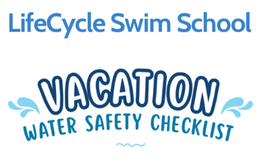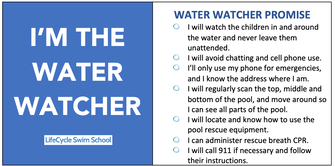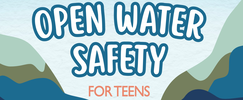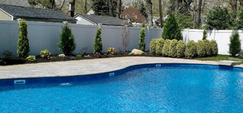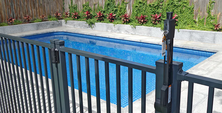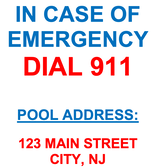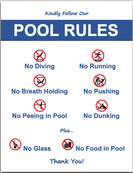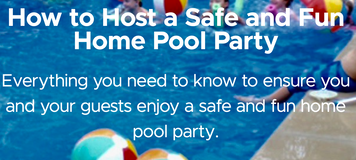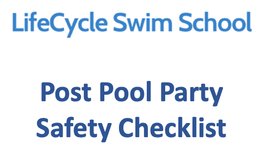Water Safety is all about Layers of Protection
Water safety advocates developed the concept of Layers of Protection because no one single protective measure keeps your family safe. Instead, it's the layering of multiple protections that helps keep people safe in, on and around water. Watch this video from the National Drowning Prevention Alliance to learn about the 5 layers of protection that help keep loved ones safe. Keep scrolling for downloadable water safety tools.
|
This thorough checklist helps families plan safe vacations that are in and around water features such as pools, lakes, oceans and waterparks. Learn what to ask when booking reservations, how to prepare, what to pack, and what precautions to take upon arrival. We also provide a list of best practices for a water safe vacation.
|
One of the best ways to improve water safety is to have a responsible adult vigilantly watching kids who are at play in or near any water features such as a pool, waterpark, or open water. Using a Water Watcher tag system helps keep track of who is responsible at any given moment for watching people in and around water.
|
|
Drowning is preventable, yet it remains the leading cause of death for children ages 1-4. Two out of three drownings happen in a home bath tub. Learn about supervision, barriers and emergency preparedness for infants and toddlers in this infographic by the National Drowning Prevention Alliance.
|
Drowning is the second leading cause of unintentional death for children ages 5-14. Teens and young adults drown mostly in open water such as lakes, rivers and oceans. 80% of these victims are male. Learn more about open water safety for teens from this infographic by the National Drowning Prevention Alliance.
|
|
Regardless of age or swimming ability, lifejackets should always be worn when boating. An accidental fall into cold water triggers a gasp breath during which even experienced swimmers can intake water and find themselves in trouble. When adults wear lifejackets, they reinforce and model this safe behavior for children. This video explains how to properly fit lifejackets so that they are comfortably worn and provide adequate buoyancy.
|
Resources For Home Pool Owners
Home Pool Safety ChecklistChildren who have access to water are at most risk. Does your pool have safety barriers? Is proper rescue equipment available, and do you know how to safely use it? Do you have an emergency action plan specific to your property? Use this checklist to help make your pool as safe as possible. You can also book a Home Pool Safety Assessment.
|
Pool Barrier ChecklistThe CDC has determined that in addition to vigilant supervision, pool barriers are the best way to prevent unsupervised access to water. Use this checklist to routinely check that pool fences and gates, including latches and hinges, are in good working order. This simple routine done regularly could help save the life of a child.
|
|
Be prepared for an emergency by posting a sign with your address. Don't assume that a guest calling 911 will know or remember your address so that they can correctly direct EMT to your pool. Edit document with your address, print, laminate and post near the pool.
|
Communicating pool rules helps stop risky behavior that can lead to accidents, injuries and drowning incidents. These universal pool rules apply to every home pool. Print, laminate and post near the pool.
|
|
Research shows that almost 40% of home pool drownings happen during parties and family gatherings when adults are present. This free 25-minute course provides guidance for invitations, supervision, rule setting and preparing the party space. We also provide best practices for during and after the party.
|
Follow this checklist to ensure your pool remains in top working order after entertaining. While research shows that almost 40% of home pool drownings happen during parties and family gatherings, almost 70% of drownings happen during non-swim time. Make sure your pool is ready and secure for daily routine around the pool.
|
